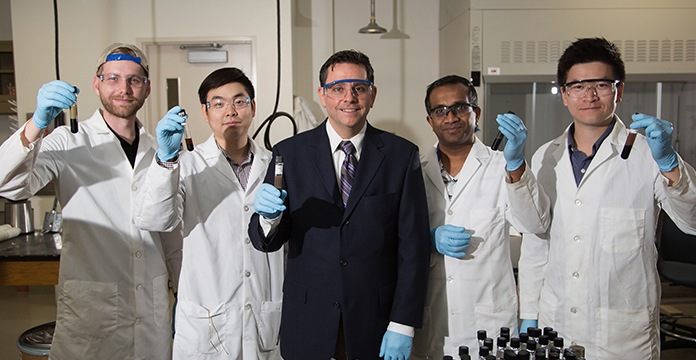Philanthropy brings top minds in engineering to UH faculty

For potential graduate students in the field of engineering, the prospect of working closely with members of the National Academy of Engineering is particularly enticing. For Joseph Tedesco, dean of the Cullen College of Engineering, attracting additional NAE members to the college’s faculty is an integral part of his strategic plan. The Cullen College currently boasts 13 NAE members as part of its faculty with the intention of reaching 22 by the year 2020.
“Whether it’s hiring NAE members from outside the school or ‘growing’ them from within, it is undeniable that the best engineering schools have the most faculty members in NAE,” said Quan Do, a second-year Ph.D. student in chemical engineering. “As our NAE numbers increase, our global reputation rises, which attracts more elite graduate students. As a result, our research output will grow, and the current students will reap the benefits because industry and academia will take our work that much more seriously.”
While the caliber of students, faculty and staff within the Cullen College of Engineering are a tremendous recruiting tool, alumni and friends of the University can do their part, as well. One of the most enticing things the college can do to recruit additional NAE faculty and reach its ambitious goal of 22 NAE members on faculty is through private philanthropy allowing for the creation of endowed chairs.
Increasing the number of endowed faculty positions accomplishes a number of goals, including recognition of the tremendous work being accomplished by individuals in their respective fields of expertise. Furthermore, the funds provided to faculty members in these positions gives them the agency to develop research projects, advance instructional programs and disseminate the scholarly work they have undertaken.
“NAE faculty bring not only a vision gained from years of success in their field, but they also have the networks and funding that enable dedication to that vision,” said Kian Torabian, a Ph.D. student in biomedical engineering who received his undergraduate degree at Stanford University. “Any influence, direct or indirect, that they may have on students, whether through connecting us to their networks or by directing innovative research and teaching programs, help those students follow in their footsteps.”